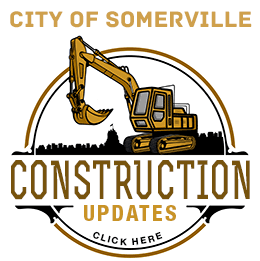 By Joseph A. Curtatone
By Joseph A. Curtatone
(The opinions and views expressed in the commentaries of The Somerville Times belong solely to the authors of those commentaries and do not reflect the views or opinions of The Somerville Times, its staff or publishers)
After the latest property tax bills went out, some property owners found themselves with larger increases than most of us have seen in Somerville for some time. I sympathize with every resident and small business owner facing those increases. This community has a legitimate concern, shared by myself and everyone at City Hall, about residents being priced out of their homes and small businesses priced out of our neighborhoods. It’s a concern shared across the metro region, well beyond our city’s borders, as property values across the metro area rise. It’s why we’ve been working to address affordability via a range of efforts for some time, and it’s why this week we began the first of three public meetings to build on existing strategies and develop new tools to tackle affordability and create a strong, effective housing agenda.
Along with those valid concerns, I’ve also heard of some confusion. I’d like to clear up some of that confusion, put this year’s assessments and tax bills into context and talk about what we’re doing right now to keep Somerville open to all.
It may provide little comfort when looking at just one tax bill, but overall, residential property tax bills in Somerville are lower than in neighboring towns and commercial tax rates fall below the middle of the pack. We are one of only five cities in the Commonwealth that offers a residential exemption to help residents reduce their tax bills. Because of this, when we checked on the average $400,000 property, we found the property tax bill for this fiscal year is $3,178 in Somerville for residents who take the exemption—third lowest among 15 of our neighboring urban communities, and one of only four at $3,200 or less. The average tax bill on a $400,000 residence in most nearby cities and towns is $4,600 and up. For that same property, comparing the last fiscal year (2013) to the current fiscal year (2014), Somerville had the second highest percent decrease of the average tax bill, down 8.7 percent. When the City announced the assessment results and projected tax rates for the year, we said that it would result in modest increases for most—and two-thirds of the properties in the city saw modest increases between 1 and 9 percent.
That is part of the context. Another factor is the fact that Massachusetts has a regressive tax system—a flat income tax, a sales tax that has gone up and a property tax that is levied without taking into account a taxpayer’s income or ability to pay the tax. This tax system disproportionately affects the middle class, retirees and small businesses. So when the real estate market begins to rebound from the worst economy since the Great Depression as it has, our middle class residents, our retirees, and our small business owners find themselves facing yet another tax bill that seems unfair. And because our Assessors are bound by state law to value properties at their actual market value, they cannot lower the assessment based on ability to pay.
At this point, without action on Beacon Hill to address regressive taxation, the question is: What can we do on the local level to ease this burden? On top of the residential exemption we already offer—10 percent more than the state’s limit, thanks to legislation we previously passed—and on top of already offering double the state allowed exemptions for seniors, veterans, widows and those with disabilities, we’re going examine how to do more. To aid this effort, I am reconvening the Financial Advisory Committee. We created this group of outside experts in 2009 to help us reduce the budget while preserving core services during the Great Recession. The Financial Advisory Committee will develop recommendations on how to find the right balance to ensure we are making the tax burden as equitable as possible, while preserving our investments in our schools, public safety and services that we all rely on. That committee can explore additional tax exemptions and relief both for residents and businesses, but it’s important to remember that an exemption doesn’t drive down the tax burden, but only shifts it from one group of people to another.
One subject that has been broached—is this a question of budgeting? No. Outside of fixed costs such as health care, contractual obligations and debt service, we have actually cut our discretionary spending. My administration has never asked for an override or debt exclusion, while almost 90 percent of Massachusetts’ cities and towns have passed one, and unlike many we have not cut teachers, police officers or firefighters or closed libraries or take away resources from our schools. We spend less per capita than two-thirds of the state’s municipalities. Moody’s specifically cited our conservative budgeting approach in reaffirming our highest bond rating ever last year. And we have managed this even though Beacon Hill has been steadily chipping away at its aid to municipalities since the year 2000. Annual net state aid is down 52 percent when you adjust for inflation. That’s roughly equivalent to the entire public safety budget this year. We have even cut our own revenue to create an environment where local businesses can thrive. We improved parking policies to bring more customers to businesses, which have led to significant cuts in fines and fees. We spend to our obligations—and to our values. We do more with less.
What would further cutting mean? Even extensive and damaging cuts would not translate to significant savings on individual tax bills. As an example, if we wanted the average two-family property to have a property tax bill that’s $93 lower than last year’s bill, it would require cutting $3 million from the budget, which would require crippling cuts to the very services that make most of us want to live here from clean streets to free after-school programs. This is why we’re trying to expand our commercial tax base through strategic community-driven development that will draw more tax-paying businesses to Somerville. It’s not just about shifting the burden off residents, which is important, but easing the tax burden on everyone, including small businesses. We need more people paying in so everyone’s share of the tax levy can go down while we still maintain services.
But expanding the commercial tax base is just one part of our long-term strategy. We continually seek new efficiencies, which is why we are able to reduce discretionary spending while still maintaining services at levels lauded nationwide. Whether it’s preventing $20 million in new costs over the past two years by shifting to GIC health insurance or converting our streetlights to energy-saving LED bulbs, we will continue to squeeze the most out of every tax dollar so that we need fewer of them. And we will continue to innovate around affordability, via programs like expansion of the affordable housing program to the working middle-class or the creation of artist districts to protect affordable live/work space.
We are thriving today because we’ve made prudent, strategic, efficient investment in our community. Businesses are thriving, with 73 net new businesses opening in the last three years. Our students are testing better than they have in years. Our residents have indicated via repeated surveys that they feel we are going in the right direction. So we will double down and continue to find solutions that work—for all of us. Our residents and small businesses are what make this city so desirable. And we have to protect them. We have heard you. We are acting. And we will act decisively.















Reader Comments